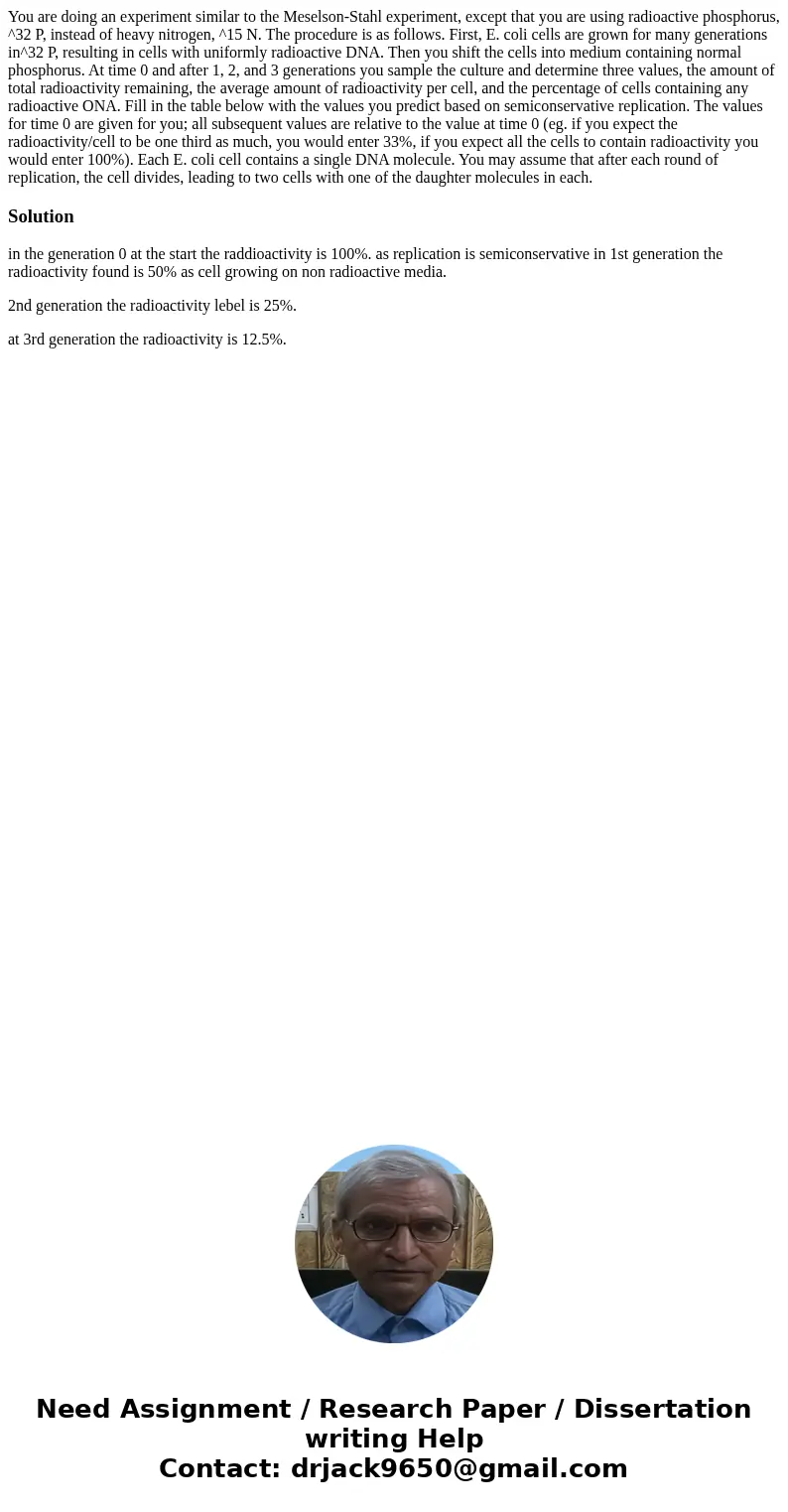You are doing an experiment similar to the MeselsonStahl exp
You are doing an experiment similar to the Meselson-Stahl experiment, except that you are using radioactive phosphorus, ^32 P, instead of heavy nitrogen, ^15 N. The procedure is as follows. First, E. coli cells are grown for many generations in^32 P, resulting in cells with uniformly radioactive DNA. Then you shift the cells into medium containing normal phosphorus. At time 0 and after 1, 2, and 3 generations you sample the culture and determine three values, the amount of total radioactivity remaining, the average amount of radioactivity per cell, and the percentage of cells containing any radioactive ONA. Fill in the table below with the values you predict based on semiconservative replication. The values for time 0 are given for you; all subsequent values are relative to the value at time 0 (eg. if you expect the radioactivity/cell to be one third as much, you would enter 33%, if you expect all the cells to contain radioactivity you would enter 100%). Each E. coli cell contains a single DNA molecule. You may assume that after each round of replication, the cell divides, leading to two cells with one of the daughter molecules in each.
Solution
in the generation 0 at the start the raddioactivity is 100%. as replication is semiconservative in 1st generation the radioactivity found is 50% as cell growing on non radioactive media.
2nd generation the radioactivity lebel is 25%.
at 3rd generation the radioactivity is 12.5%.

 Homework Sourse
Homework Sourse